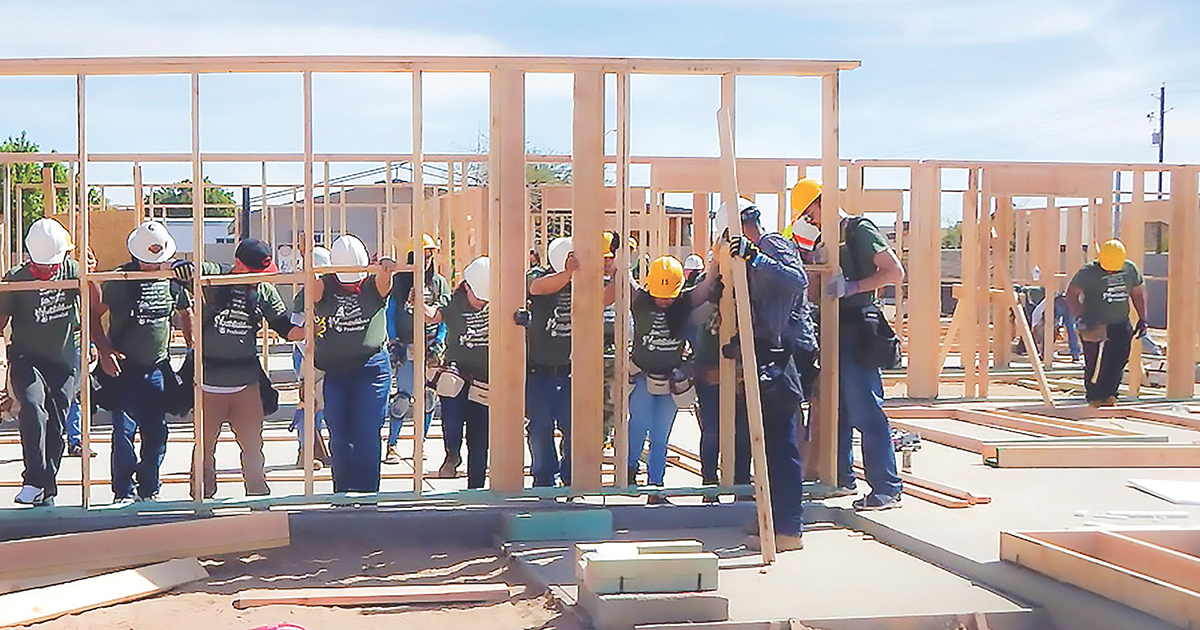YouthBuild Evaluation

Overview
Making the successful transition to adulthood had become increasingly challenging for disadvantaged young people. Two changes in the labor market have contributed to this trend. First, the rise in demand for higher skilled workers, while increasing the payoff to college, has resulted in declining real wages for less-educated workers. On top of this, youth are finding it harder and harder to find jobs, reflecting what has been called a “collapse” in the young adult labor market. Between 2000 and 2008, for example, the share of all 16- to 19-year-olds with no paid employment during the summer rose from 48 percent to 62 percent. Employment rates are especially low for youth without a high school diploma. High rates of youth unemployment are a concern given that early problems in the labor market can have lasting effects.
The realities of today’s labor market pose a particular challenge for out-of-school youth, who are no longer connected to institutions designed to provide them with training and link them to good jobs. YouthBuild is a “second chance” program for these young people. Targeted largely to high school dropouts, YouthBuild is a federally and privately funded program that provides construction-related training, educational services, counseling, and leadership development opportunities to low-income, out-of-school youth ages 16 to 24. As part of their training in construction, participants work on renovating or constructing housing for low-income or homeless people.
Finding ways to reengage high school dropouts and help them make a successful transition to adulthood is one of our nation’s central social policy challenges. YouthBuild is one of the most promising models serving out-of-school youth, since it contains some of the best elements of youth development programs and has a broad network, serving thousands of youth per year. Thus, the results of the YouthBuild evaluation will have critical implications for national policy.
Additional Project Details
Agenda, Scope, and Goals
From its inception in the 1970s as a single program in New York City, YouthBuild has expanded to a national network of more than 200 local programs serving approximately 9,000 youth per year. Eligibility is typically limited to out-of-school youth ages 16-24, who are from a low-income family, in foster care, are offenders, migrants, disabled, or are children of incarcerated parents. The main goals of the program are to:
- enable disadvantaged youth to obtain the education and employment skills necessary to achieve self-sufficiency in high-demand occupations and postsecondary education and training opportunities;
- provide disadvantaged youth with opportunities for meaningful work and service to communities;
- foster the development of employment and leadership skills and commitment to community development among youth in low-income communities; and
- expand the supply of permanent affordable housing for homeless individuals and low-income families by utilizing the energies and talents of disadvantaged youth.
Most YouthBuild participants spend from 8 to 12 months full time in the program receiving a variety of services, including stipends, wages, or living allowances. These services typically include some kind of assessment, a “mental toughness” orientation, educational activities, vocational training, leadership training and community service, counseling, support services, job placement, and follow-up services. Participants are offered educational services at least 50 percent of the time that they are in the program, and services provided can include basic skills instruction, remedial education, bilingual education, alternative education leading to a high school diploma or GED, counseling or assistance in attaining postsecondary education and financial aid, and alternative secondary school services. Participants generally spend most of the remaining half of their time in the program in construction training — rehabilitating or building housing for low-income or homeless people.
Design, Sites, and Data Sources
The project selected 83 YouthBuild programs around the country to participate in the study. Between August 2011 and January 2013, eligible youth at each YouthBuild program were randomly assigned to a treatment group, eligible to enroll in YouthBuild, or a control group, not eligible for YouthBuild but able to participate in existing services within the community, for a total study sample of nearly 4,000 youth. The two groups will be tracked over time to determine the effects of the YouthBuild program.
The primary data sources used in the evaluation will include follow-up surveys administered at 12, 30, and 48 months after random assignment and administrative records data on employment and earnings and postsecondary education enrollment.
The evaluation will include three major strands of research:
- Impact analysis. This analysis will examine the program’s effects on youths’ educational attainment, employment and earnings, involvement with the criminal justice system, and other outcomes. Effects will be examine for key subgroups of youth, defined by selected characteristics, and for key subgroups of sites, defined by program fidelity and selected program components. The analysis will also examine the effectiveness of alternative program models, using variation across sites in specific program features.
- Process analysis. This analysis will provide information necessary to understand and interpret the results by: (1) describing the design of the participating YouthBuild programs, the services they offer to youth, and the implementation of these services; (2) describing key contextual factors in the local communities that may affect services and outcomes for youth; (3) collecting data on the costs of operating YouthBuild; and 4) describing the youth who participate in the study, the experiences of youth in YouthBuild, and the dosage of YouthBuild services they receive.
- Cost-effectiveness analysis. This analysis will compare the net cost of YouthBuild services — that is, the cost relative to the cost of services received by youth in the control group to the resulting impacts (benefits) generated by the program. The result can be used to answer such questions as, “what is the average percentage increase in GED attainment per net (or added) dollar invested in YouthBuild?”









